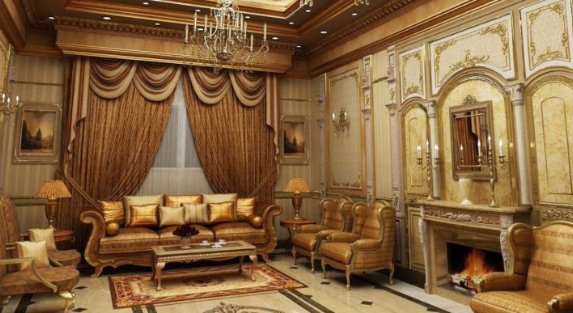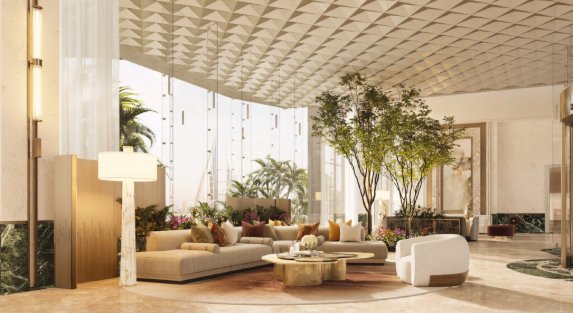Arabic home decor has long been a symbol of sophistication, luxury, and cultural heritage. Over the years, the design language of homes in the Arab world has undergone significant transformation, blending time-honored traditions with the sleek, minimalistic aesthetics of modern design. As we navigate through the rich history of Arabic decor, we can see how home interior design solutions have adapted, pushing the boundaries of style, while respecting cultural values and the region’s architectural identity.
In this article, we explore how Arabic home decor has evolved from its traditional roots to contemporary trends, highlighting the fusion of the old and new in today’s home decor interior solutions.
Traditional Arabic Home Decor: A Rich Cultural Heritage
Traditional Arabic home decor is deeply rooted in the region’s cultural heritage, drawing influences from Islamic art, regional craftsmanship, and the practicalities of desert living. The key elements of traditional Arabic decor focus on grandeur, intricate patterns, and an opulent use of materials that speak to wealth and hospitality. Home interior design solutions for these spaces emphasize comfort, beauty, and warmth, aiming to create an inviting atmosphere for family and guests alike.
Opulent Fabrics and Rich Textiles
In traditional Arabic homes, luxurious textiles are central to the design. Fabrics like velvet, brocade, and silk were used for upholstery, curtains, and cushions, giving rooms an aura of grandeur. These materials often feature rich, bold colors such as deep red, gold, and royal blue, symbolizing luxury and status. Home decor interior solutions today continue to incorporate these textiles but with modern interpretations and more sustainable fabrics that maintain the elegance of the traditional look.
Intricate Carpets and Rugs
One of the hallmarks of Arabic interior design is the use of Persian and Oriental carpets. These handmade rugs are known for their intricate patterns and luxurious quality, often displayed in living rooms, entryways, and prayer rooms. These pieces not only offer comfort underfoot but also contribute to the overall aesthetic by introducing vibrant colors and cultural symbolism.
Woodwork and Mashrabiya Screens
Traditional Arabic design often includes mashrabiya—decorative wooden latticework found in windows and doors. This feature provides privacy while allowing airflow, making it a practical and decorative element in homes. The intricate patterns in mashrabiya also add a level of artistry that defines traditional Arabic decor.
Modern Arabic Home Decor: A Shift Towards Minimalism and Technology
While traditional Arabic decor still holds a significant place in many homes, modern Arabic interiors are evolving to reflect a more minimalist, functional aesthetic. The shift from intricate designs to sleek, clean lines marks a new era in home interior design solutions. This evolution is driven by the demands of modern living, where comfort, space, and technology play an important role.
Minimalist Furniture and Clean Lines
Modern Arabic homes emphasize simplicity. Furniture pieces are designed with sleek lines, functional layouts, and minimalist appeal. Home decor interior solutions have evolved to include open floor plans, where living areas are more spacious and uncluttered. Rather than using heavy, ornate furniture, modern designs focus on ergonomics, comfort, and multi-functional spaces.
Neutral Color Palettes with Bold Accents
While traditional Arabic decor favored bold colors like red, gold, and royal blue, modern homes are embracing neutral color schemes such as beige, gray, and white. These hues create a serene, elegant atmosphere. However, accents of rich colors, such as emerald green cushions or gold fixtures, are often used strategically to introduce warmth and vibrancy into the space without overwhelming the overall aesthetic.
Technology Integration in Home Design
A major shift in modern Arabic homes is the integration of smart technology. From automated lighting and climate control to advanced security systems, modern Arabic interiors are becoming more high-tech. Smart home solutions allow homeowners to control every aspect of their living environment through mobile apps or voice commands, all while maintaining the stylish and comfortable atmosphere that is characteristic of Arabic decor.
Blending Tradition with Modernity: The Fusion of Old and New
The most exciting aspect of Arabic home decor today is the fusion of traditional and modern elements. As the region embraces global trends, home interior design solutions are integrating the richness of traditional Arabic design with the sleekness of contemporary aesthetics. This balance is achieved through the use of modern materials, innovative technology, and timeless cultural references.
Modern Interpretations of Traditional Elements
Traditional mashrabiya is making a comeback but in a more modern form. While the intricate latticework remains a defining feature, it is now often made from contemporary materials like glass or metal, offering the same aesthetic appeal but with a more lightweight, transparent feel. Designers are incorporating these elements as room dividers or even as artistic pieces on feature walls, blending the old with the new.
Artistic Heritage in a Contemporary Space
One of the key aspects of blending traditional Arabic decor with modern design is the use of art. While traditional designs often featured religious and cultural motifs, contemporary designs embrace both local and global artwork. Home decor interior solutions now feature a mix of abstract art, digital prints, and traditional calligraphy, bringing together the old-world charm with modern creativity.
Luxury Materials with a Modern Twist
The luxurious materials of the past, such as marble, wood, and brass, are still very much in use but have been reinterpreted in more minimalist ways. Modern home interior design solutions use these materials in cleaner, more functional designs. For example, marble countertops, once seen as heavy and ornate, are now paired with light, open shelving, and sleek, modern cabinetry, creating an atmosphere of understated luxury.
Cultural Influence in Modern Arabic Interiors
The influence of Arabic culture is deeply embedded in every aspect of home decor, whether traditional or modern. As Arabic design continues to evolve, there is a growing emphasis on blending cultural elements with modern aesthetics. This fusion enriches the environment, making it not just a living space but a representation of the region’s heritage, values, and modern aspirations.
Incorporating Arabic Calligraphy and Islamic Art
Arabic calligraphy and Islamic art have always been an essential part of traditional home decor. Today, home interior design solutions are embracing these timeless artistic expressions while infusing them with contemporary designs. Modern homes often feature large, minimalistic artwork or decorative pieces that integrate Arabic calligraphy, bringing the beauty of this art form into modern, elegant settings.
The use of geometric patterns and arabesques, which have their roots in Islamic art, is being reimagined in innovative ways. Home decor interior solutions in modern homes often feature these patterns in wallpaper, textiles, and even furniture, creating a perfect harmony between the old and the new. These designs not only celebrate cultural heritage but also introduce a level of sophistication and luxury to the modern living space.
Local Craftsmanship Meets Contemporary Materials
Another aspect of Arabic decor that has evolved is the use of local craftsmanship, such as handmade pottery, ceramics, and woodwork. While these items have always been part of traditional Arabic homes, today, they are being combined with modern materials such as steel, glass, and acrylic. The result is a unique blend of traditional skills and cutting-edge design.
Designers are also incorporating local artisan work into home decor interior solutions to create spaces that feel connected to the region’s culture while being highly functional. The modern approach to incorporating cultural artifacts into home design involves placing them in settings that highlight their craftsmanship while maintaining a clean, contemporary aesthetic.
Sustainability in Arabic Home Decor: A Growing Trend
As the world becomes more environmentally conscious, sustainability is playing a pivotal role in the evolution of Arabic home decor. Luxury today doesn’t just mean opulence; it also means being mindful of the environment and reducing one’s ecological footprint. This trend is becoming more prevalent in modern Arabic homes, where home interior design solutions are increasingly incorporating eco-friendly materials and energy-efficient technologies.
Sustainable Materials in Modern Design
In the past, Arabic homes favored rich, luxurious materials such as marble, gold, and ornate woods. However, home decor interior solutions in modern Arabic homes are shifting towards more sustainable alternatives. Materials like bamboo, reclaimed wood, recycled glass, and natural stone are gaining popularity. These materials not only help reduce environmental impact but also add a more organic and earthy feel to the interiors.
Bamboo flooring, for instance, is both durable and eco-friendly, and it has found its place in modern Arabic homes. Recycled glass is being used for countertops, tiles, and decorative elements, while natural stone is being incorporated in subtle ways to keep the design fresh, yet sophisticated.
Energy-Efficient Homes with Smart Design
The shift towards energy efficiency is also influencing home interior design solutions. Modern Arabic homes are increasingly equipped with smart technologies that reduce energy consumption. Smart thermostats, LED lighting, and automated blinds all contribute to a more energy-efficient home. Additionally, architects are designing homes that maximize natural light, reduce the need for artificial lighting, and improve air circulation, thereby promoting a sustainable living environment.
By combining eco-conscious materials with innovative technologies, today’s Arabic homes are proving that luxury and sustainability can go hand in hand.
Personalization: Tailoring Homes to Individual Needs
One of the most exciting trends in Arabic home decor is the emphasis on personalization. Modern homeowners are seeking to create spaces that reflect their personality, lifestyle, and values. This is particularly evident in the move towards customized furniture, bespoke art pieces, and unique interior design solutions that cater to the specific needs of the homeowner.
Custom Furniture and Tailored Interior Elements
Unlike traditional Arabic interiors, where the furniture was often sourced from the same high-end suppliers, modern home interior design solutions are focusing on bespoke creations. Custom-built furniture allows homeowners to create spaces that are truly their own, whether that involves designing a sofa that fits perfectly with the room’s dimensions or incorporating locally sourced materials into the design.
Many designers are working closely with artisans to create one-of-a-kind furniture pieces that combine luxury with functionality. These tailored elements make each home unique, reflecting the homeowner’s taste and preferences.
Creating Personalized Spaces with Local Influences
While customization is key, home decor interior solutions today are also looking to incorporate local influences into every element of the design. For example, a modern Arabic living room might feature contemporary sofas paired with traditional wooden coffee tables or handwoven rugs. These personalized touches create an environment where the homeowner feels a sense of connection to their culture while enjoying the comfort and luxury of modern living.
In addition to furniture, artwork is becoming increasingly customized. Art collectors in Bahrain, Dubai, and other parts of the Arab world are commissioning pieces that reflect their personal stories or professional journeys. These artworks, often integrated into modern home decor interior solutions, make a house feel more like a personal sanctuary.
Conclusion: The Future of Arabic Home Decor
The evolution of Arabic home decor represents a beautiful marriage of the past and the present. Traditional elements continue to serve as the foundation, while modern home interior design solutions infuse new life and relevance into these age-old designs. The ability to blend traditional craftsmanship with contemporary aesthetics has created a dynamic and vibrant design landscape in the Arab world.
As Arabic home decor continues to evolve, we can expect to see even more fusion of style, technology, and sustainability. Today’s homeowners demand spaces that are functional, stylish, and a reflection of their cultural heritage, and designers are answering that call with thoughtful, personalized designs. Whether embracing the rich history of Arabic design or exploring the possibilities of modern innovation, the future of Arabic home decor will continue to be defined by a harmonious balance between tradition and transformation.








